July 5, 2005
The 2nd symposium entitled "To know, record or explore 'kansei'"
COE, University of Tsukuba, Tsukuba, Japan
On motion illusion in a stationary image
Akiyoshi Kitaoka
Department of Psychology, Ritsumeikan University, Kyoto, Japan; e-mail HP
since July 2, 2005
Here I classify anomalous motion illusions into nine classes and discuss them.
Type I
A smooth retinal slip generates anomalous motion illusion in the direction different from the retinal slip.
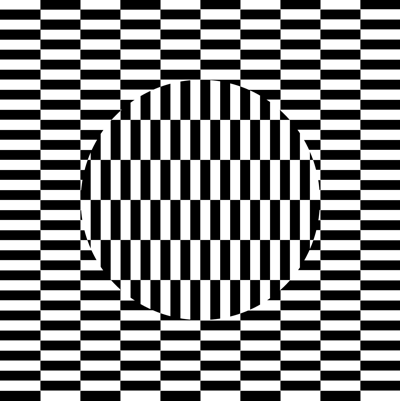
Ouchi illusion
The inset appears to move.
Ouchi H, 1977 Japanese optical and geometrical art (Mineola NY: Dover)
Spillmann L, Heitger F, Schuller S, 1986 "Apparent displacement and phase unlocking in checkerboard patterns" Paper presented at the 9th European Conference on Visual Perception, Bad Nauheim
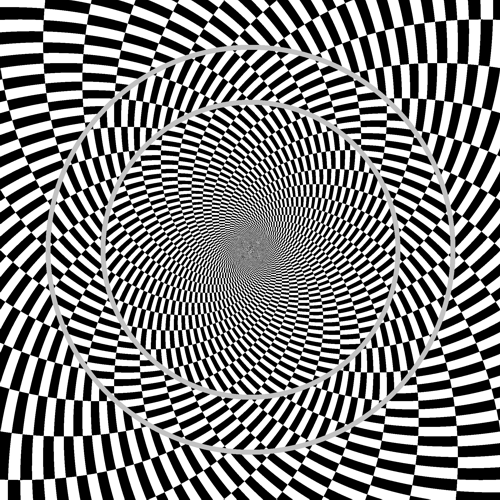
Rotating Ouchi illusion
When observers look close or move away from the image keeping their eyes fixed on the center, the ring appears to rotate.
Kitaoka A and Murakami (in preparation) Rotating Ouchi illusion and its underlying mechanism.
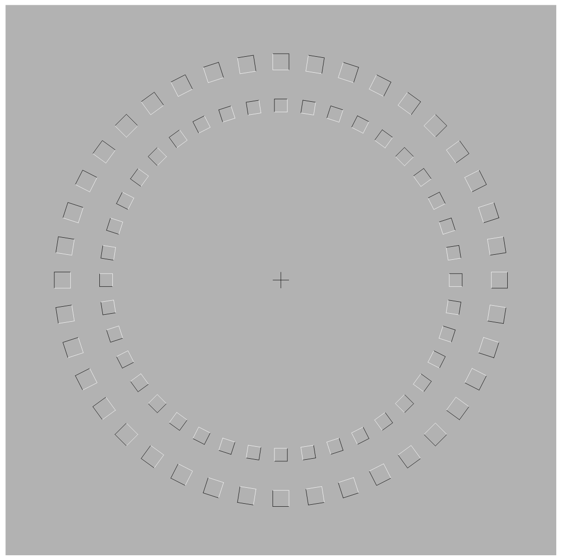
Pinna-Brelstaff illusion
When observers look close or move away from the image keeping their eyes fixed on the center, the rings appear to rotate in the different directions.
Pinna B, Brelstaff G, 2000 "A new visual illusion of relative motion" Vision Research 40 2091-2096
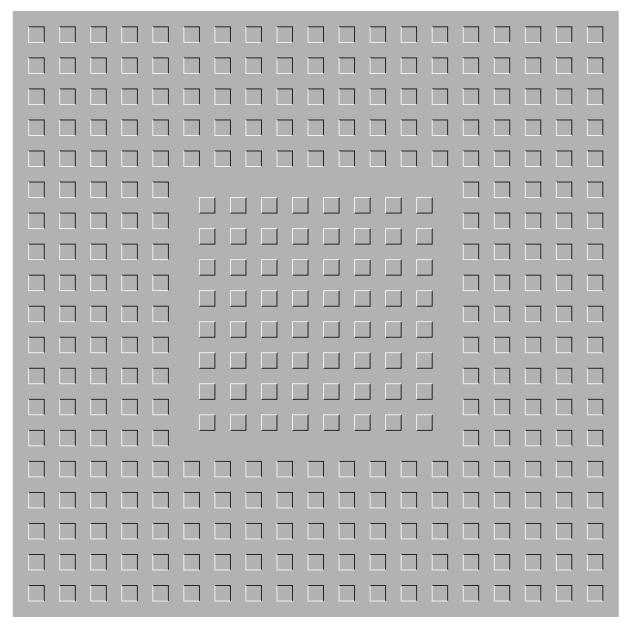
Pinna-Brelstaff illusion (inset-surround version)
The inset appears to move.
produced July 2, 2005
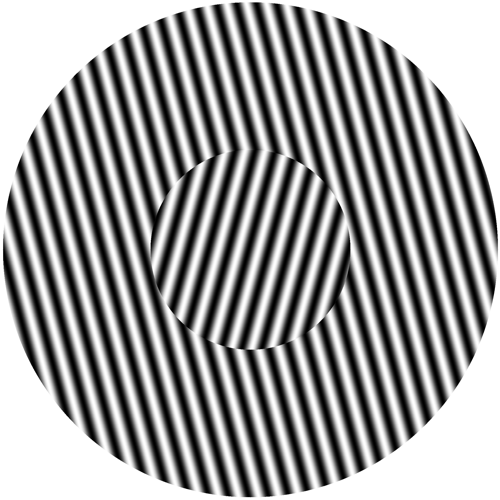
Hine illusion
The inset appears to move.
Hine T J, Cook M, Rogers G T, 1995 "An illusion of relative motion dependent upon spatial frequency and orientation" Vision Research 35 3093-3102
Hine T J, Cook M, Rogers, G T, 1997 "The Ouchi illusion: An anomaly in the perception of rigid motion for limited spatial frequencies and angles" Perception & Psychophysics 59 448-455
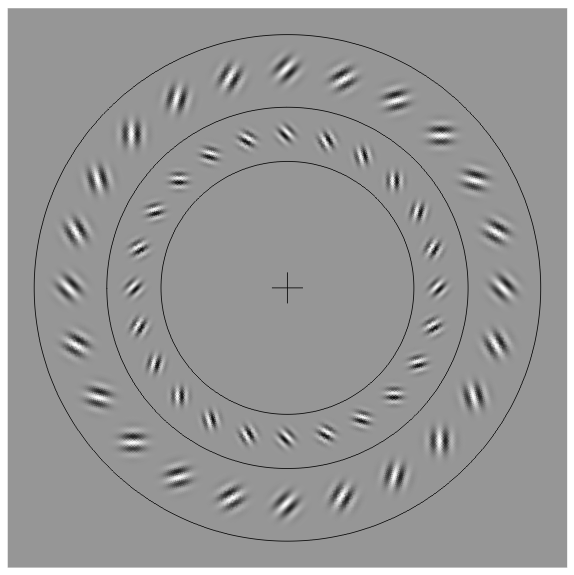
Gurnsey illusion
When observers look close or move away from the image keeping their eyes fixed on the center, the rings appear to rotate in the different directions.
Gurnsey R, Sally S L, Potechin C, Mancini S, 2002 "Last but not least: Optimizing the Pinna-Brestaff illusion" Perception 31 1275-1280
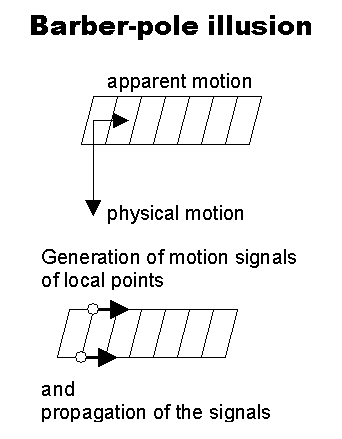
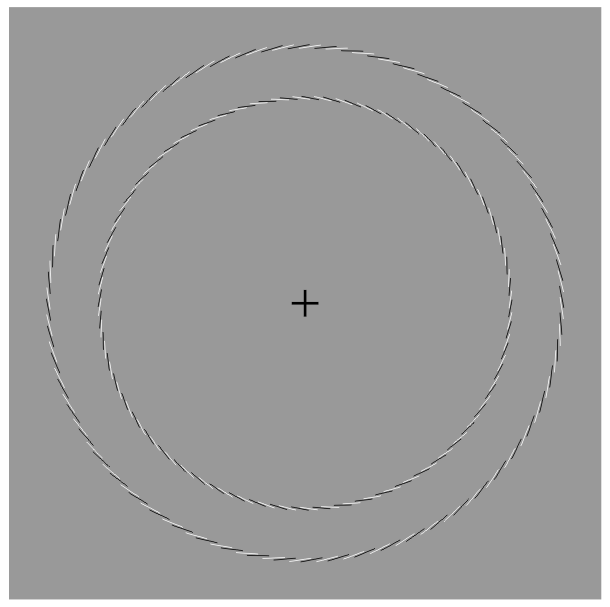
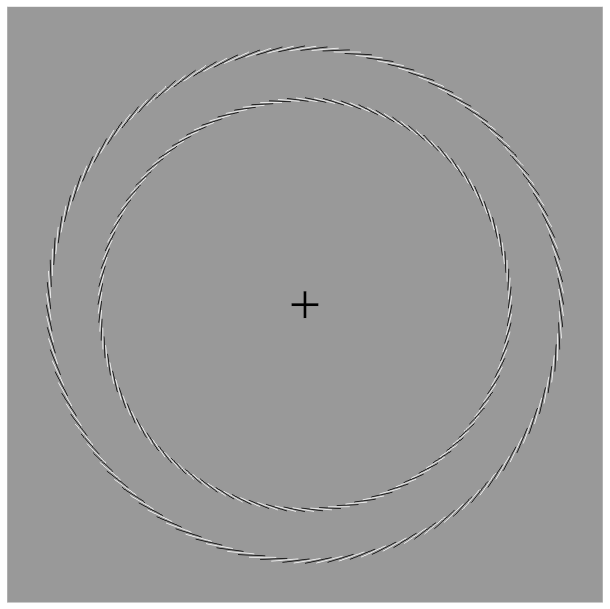
When observers look close or move away from the image keeping their eyes fixed on the center, the rings appear to rotate in the different directions. The directions in apparent motion are different from each image. Are these OK?
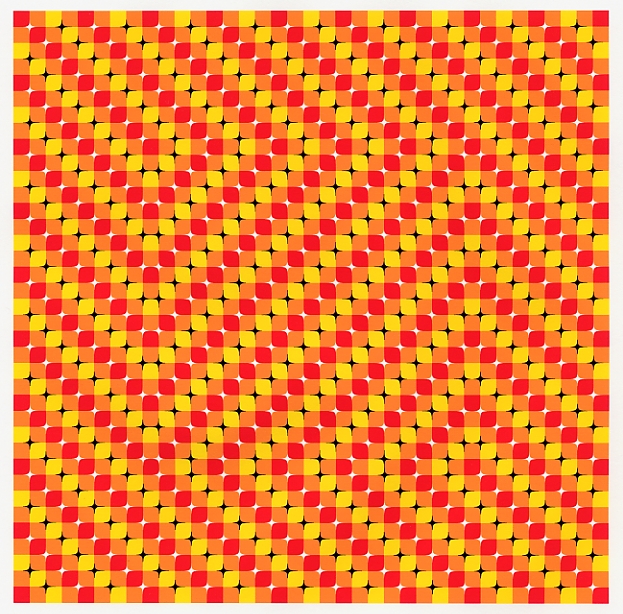
"The autumn color swamp"
The inset appears to move.
Copyright
A.Kitaoka 2000
(c)Akiyoshi
Kitaoka "Trick eyes" Tokyo: KANZEN 2002
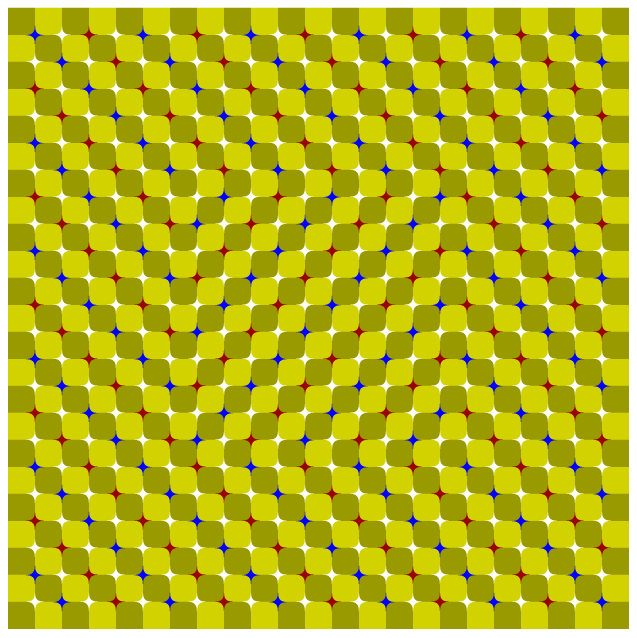
"Protective coloration"
The inset appears to move.
Copyright A.Kitaoka 2004 (July 16)
Illusion of Y-junctions (in Japanese)
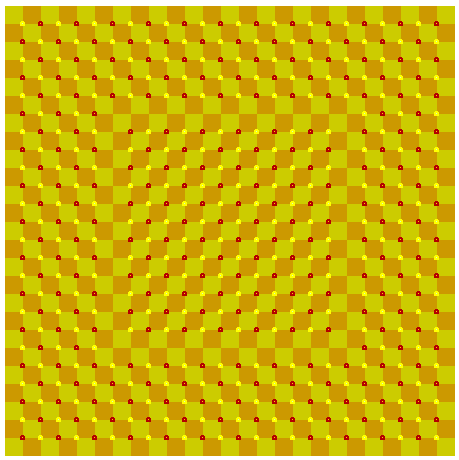
"Cherries"
The inset appears to move.
Copyright
A.Kitaoka 2002
(c)Akiyoshi
Kitaoka "Trick eyes" Tokyo: KANZEN 2002
"Rain"
The inset appears to move.
Copyright Aliyoshi Kitaoka 2005 (July 2)
A remake of the work in 2000
"Momo no sekku 2"*
* The day (3rd March) for cerebration of the growth of young girls
Rows are parallel but appear to tilt clockwise (top, center, bottom) or counterclockwise (the rest two), which is the Zöllner illusion. Moreover, anomalous motion illusion is observed, too.
Copyright Aliyoshi Kitaoka 2005 (July 2)
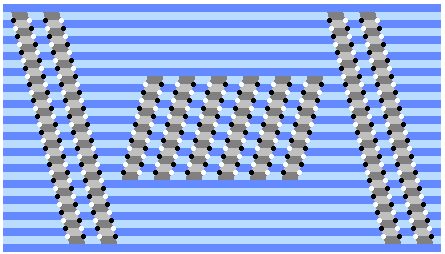
"Watashi"*
*Ferry boat
The inset appears to move in the horizontal direction.
Copyright
A.Kitaoka 2000
(c)Akiyoshi
Kitaoka "Trick eyes" Tokyo: KANZEN 2002
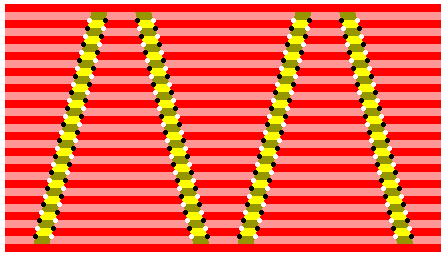
"Makudonarudo"*
*Japanese pronunciation of McDonald's
Each row appears to move in the horizontal direction.
Copyright
A.Kitaoka 2000
(c)Akiyoshi
Kitaoka "Trick eyes" Tokyo: KANZEN 2002
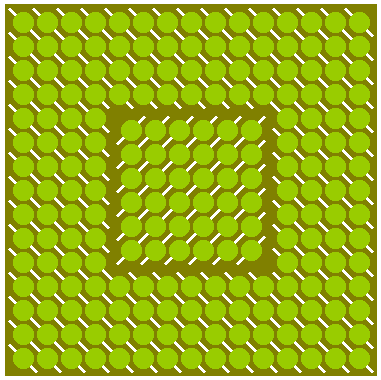
"Dango"*
*kind of food or cake
The inset appears to move.
Copyright A.Kitaoka 2002 (July 15, 2002)
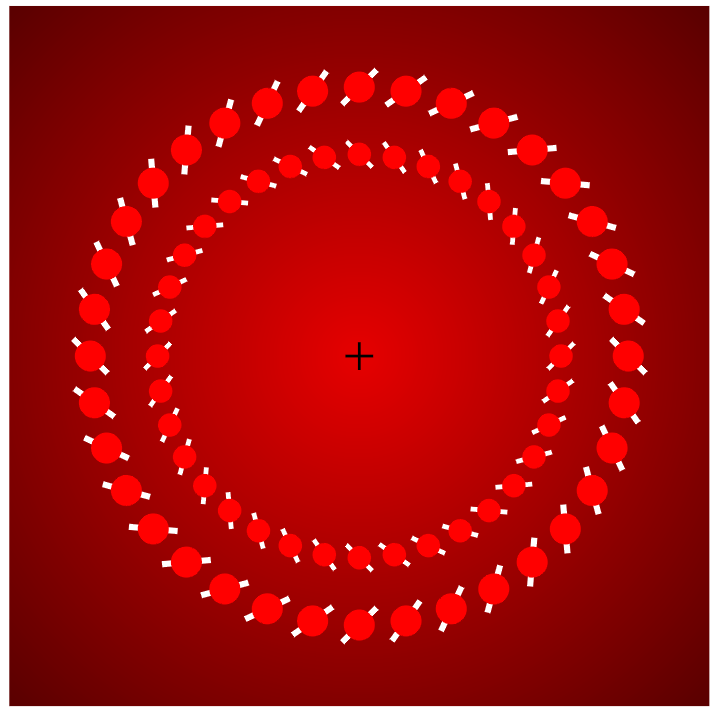
"Candies"
A remake
Rings appear to rotate when observers look close or move apart from the image keeping the eyes fixed in the center.
Copyright Akiyoshi Kitaoka 2005 (June 29)
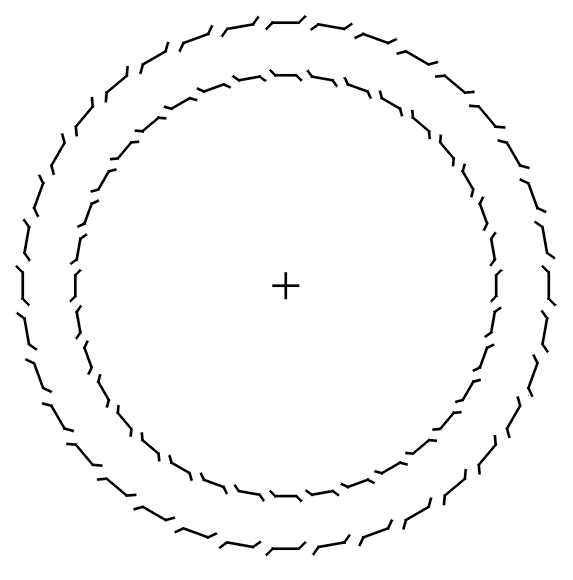
"A tire"
The two concentric arrays of S-shaped figures appear to rotate in the different directions when we approach or move away from the figure while fixating at the center.*
Copyright
A.Kitaoka 2000
(c)Akiyoshi Kitaoka "Trick eyes" Tokyo: KANZEN
2002
*Such an idea, the looming method, was first presented by Pinna and Brelstaff (Vision Research, 40, 2091-2096, 2000)
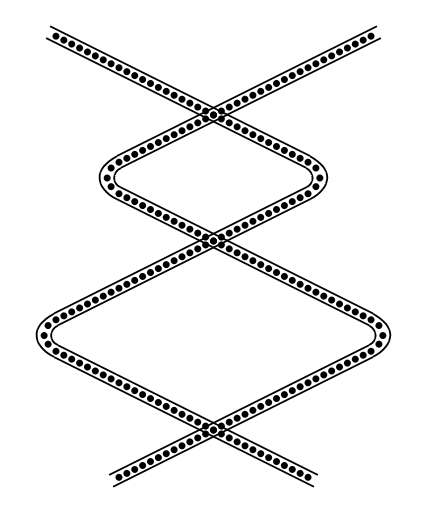
"Frog"
Dots appear to move when the
image slips vertically.
Copyright
Aiyoshi Kitaoka 2005 (March 2)
Originally created in 2002
Type II
Anomalous motion illusion based upon visual delay
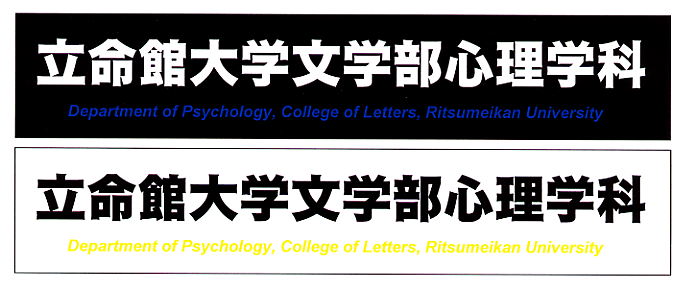
Ritsumeikan illusion
The blue letters (and the yellow letters actually) appear to move according to retinal slips.
Kitaoka, A. and Ashida, H. (2002) An anomalous motion illusion based upon signal delay. Perception, 31, Supplement, p. 162
Kitaoka A, Ashida H, in submission "An anomalous motion illusion based upon visual latency"
Type III
Anomalous motion illusion based upon apparent speed
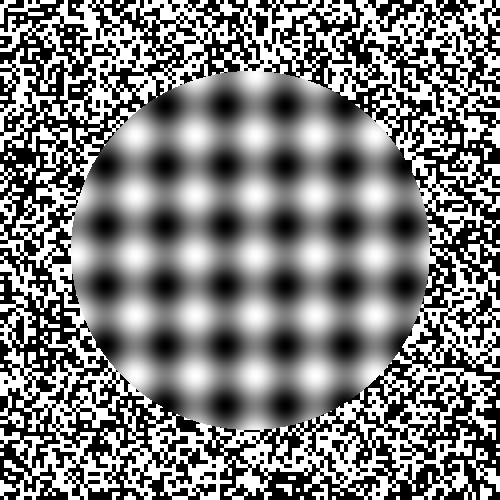
"Out of focus"
The inset appears to fluctuate.
Copyright A.Kitaoka 2001
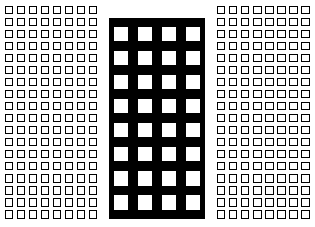
"Earthquake"
The center block and the flanking blocks appear to move relative to each other.
Copyright
A.Kitaoka 2002 (June 25, 2002)
(c)Akiyoshi Kitaoka "Trick eyes" Tokyo: KANZEN
2002
Type IV
Anomalous motion illusion based upon the fluctuation of chromatic abberation?
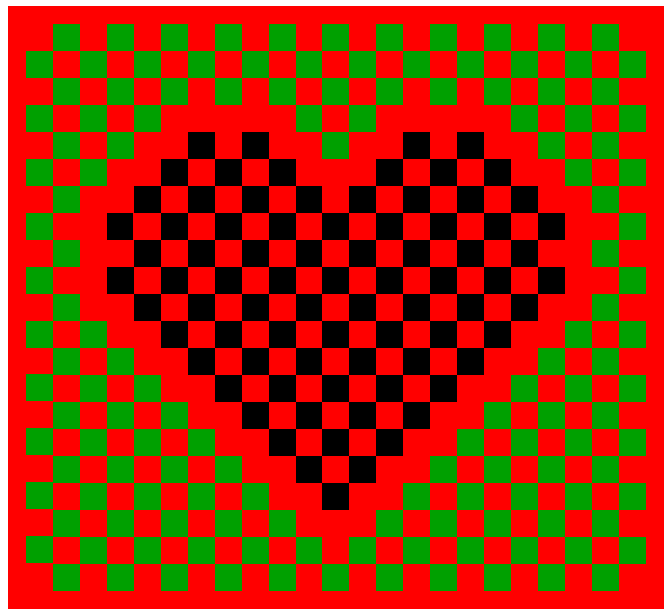
"Fluttering heart II"
The black heart appears to move.
Copyright Aiyoshi Kitaoka 2005 (May 28)
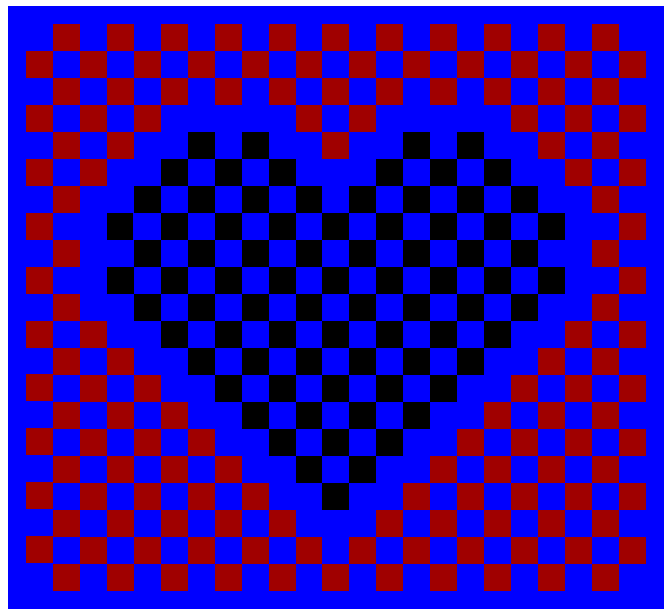
"A black heart"
For more than half people, the black heart appears to be behind the brown surround. In addition, the heart appears to move a little.
Copyright Akitaoka Kitaoka 2005 (March 2)
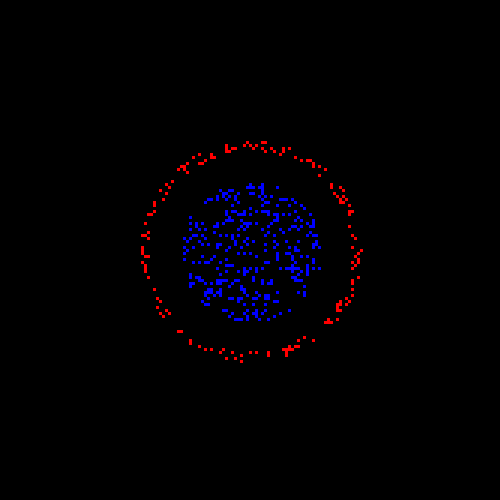
"The end of the earth"
For more than half people, the red ring appears to be in front of the blue "earth". In addition, they appear to move.
Copyright Akitaoka Kitaoka 2004 (December 29)
Type V
I have never obtained hints to clarify the mechanism of this type.
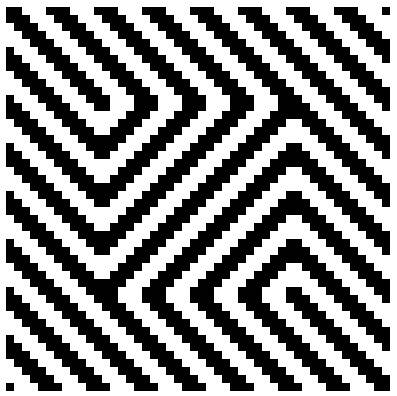
"Staircase"
The inset appears to move.
Copyright
A.Kitaoka 2002
(c)Akiyoshi Kitaoka "Trick eyes" Tokyo: KANZEN 2002
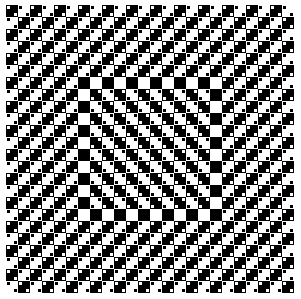
"Trampoline"
The inset appears to move. This figure consists of squares.
Copyright A.Kitaoka 2000
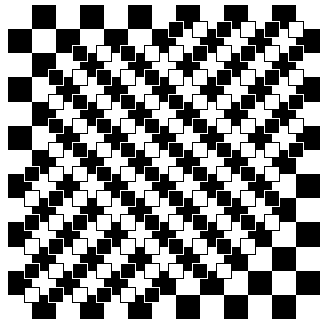
"A moth"
Squares appear to move.
Copyright
A.Kitaoka 2002
(c)Akiyoshi Kitaoka "Trick eyes2 " Tokyo: KANZEN 2003
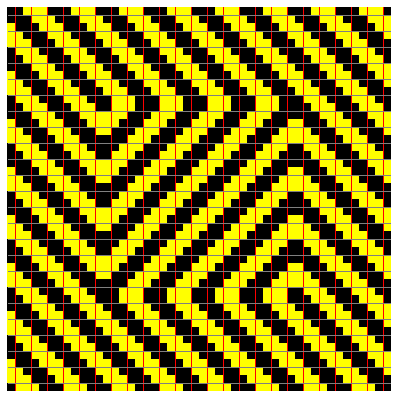
"Joro-gumo"*
*a kind of spider
The inset appears to move.
Copyright
A.Kitaoka 2002
(c)Akiyoshi Kitaoka "Trick eyes" Tokyo: KANZEN
2002
Type VI
I have never obtained hints to clarify the mechanism of this type.
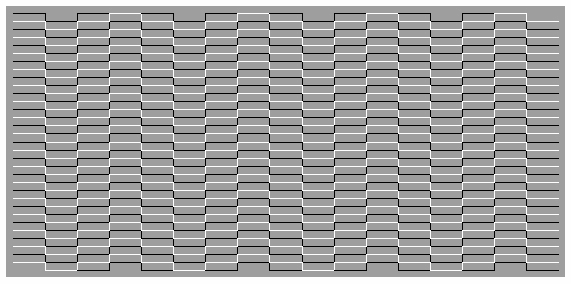
"Heat shimmer"
Involuntary eye movements (?) generate the perception like a heat shimmer.
Copyright A.Kitaoka 1998
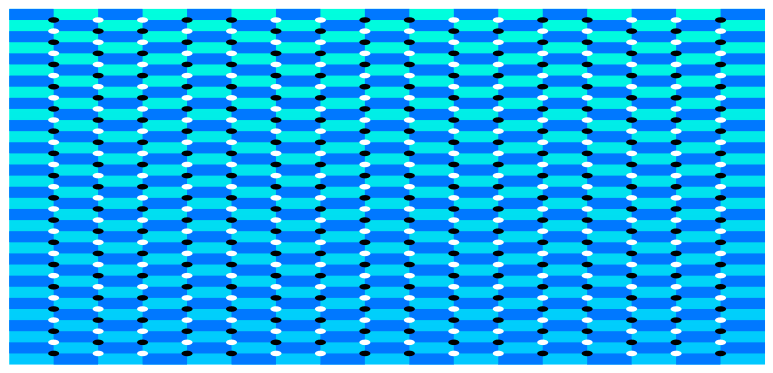
"The bottom of the sea #2"
The image appears to wave.
Copyright A.Kitaoka 2005 (April 15)
cf
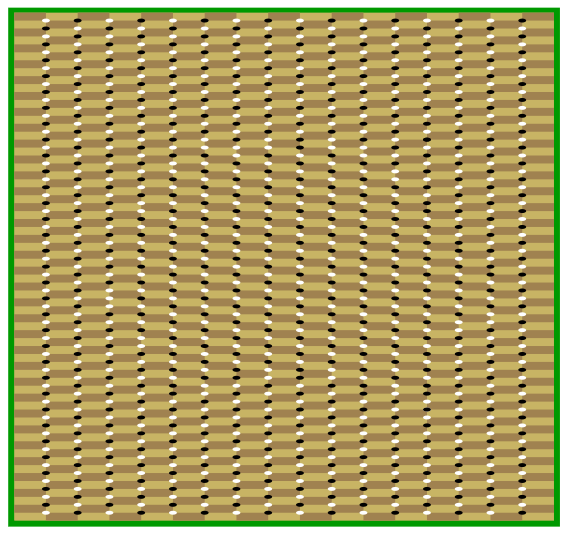
"Uribo"
"Uribo" refers to wild boar's child
Uribo appears to move to the
right.
Copyright Aiyoshi Kitaoka 2005 (April 15)
cf
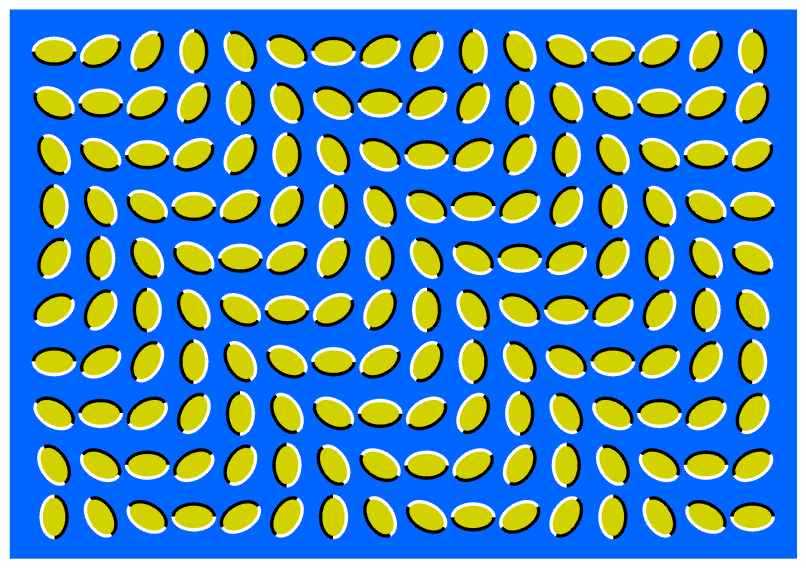
"Rice wave"
The image appears to wave.
Copyright A.Kitaoka 2004 (May 1)
Type VII
I have never obtained hints to clarify the mechanism of this type.
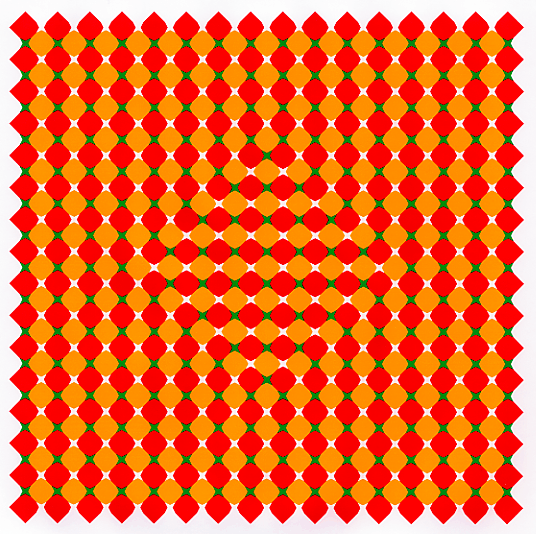
"Tomatos"
The inset appears to hop.
Copyright
A.Kitaoka 2002
(c)Akiyoshi
Kitaoka "Trick eyes" Tokyo: KANZEN 2002
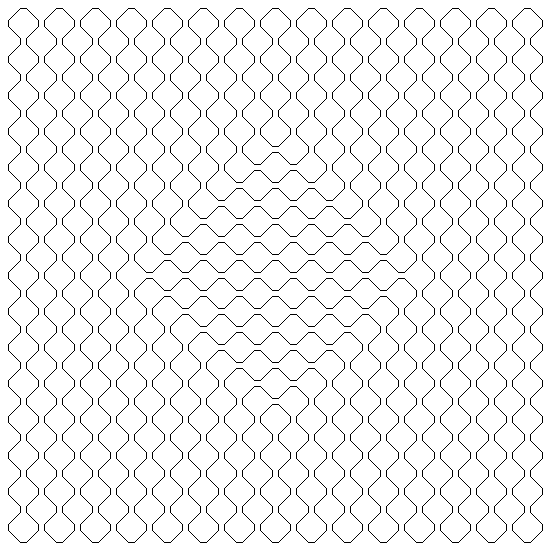
"UFO in mesh"
The inset appears to hop slightly.
Copyright A.Kitaoka 2000
Type IX
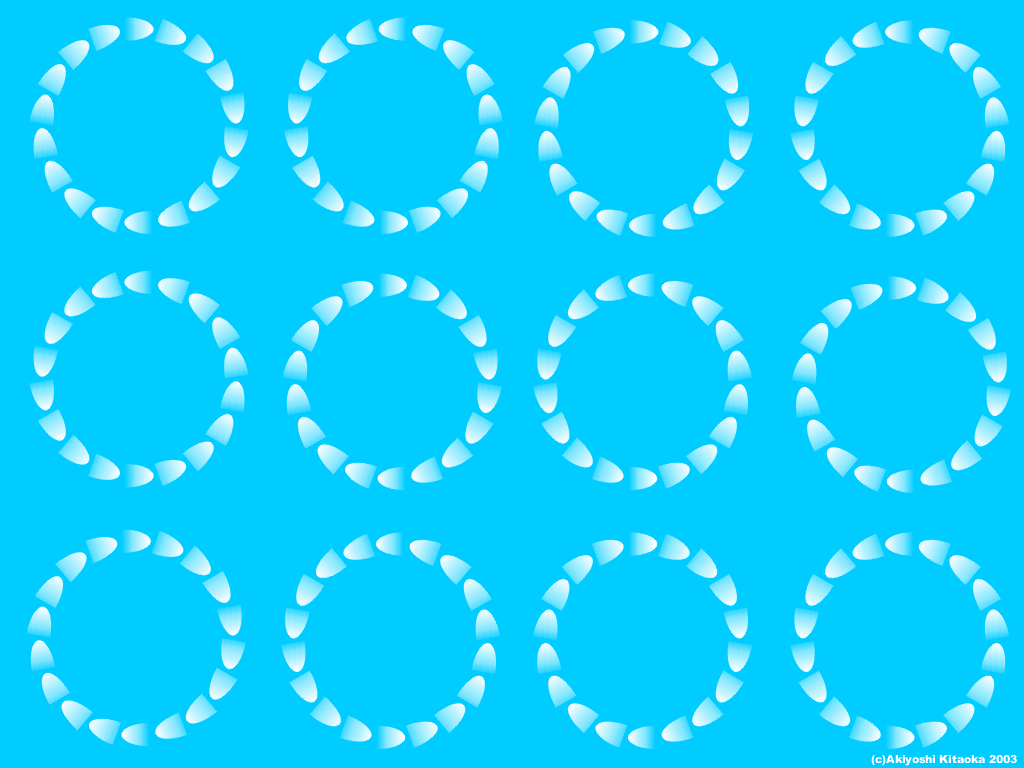
"Boats"
1024 x 768 pixels
Each ring of boats appears to rotate clockwise or counterclockwise.
Copyright A.Kitaoka 2003
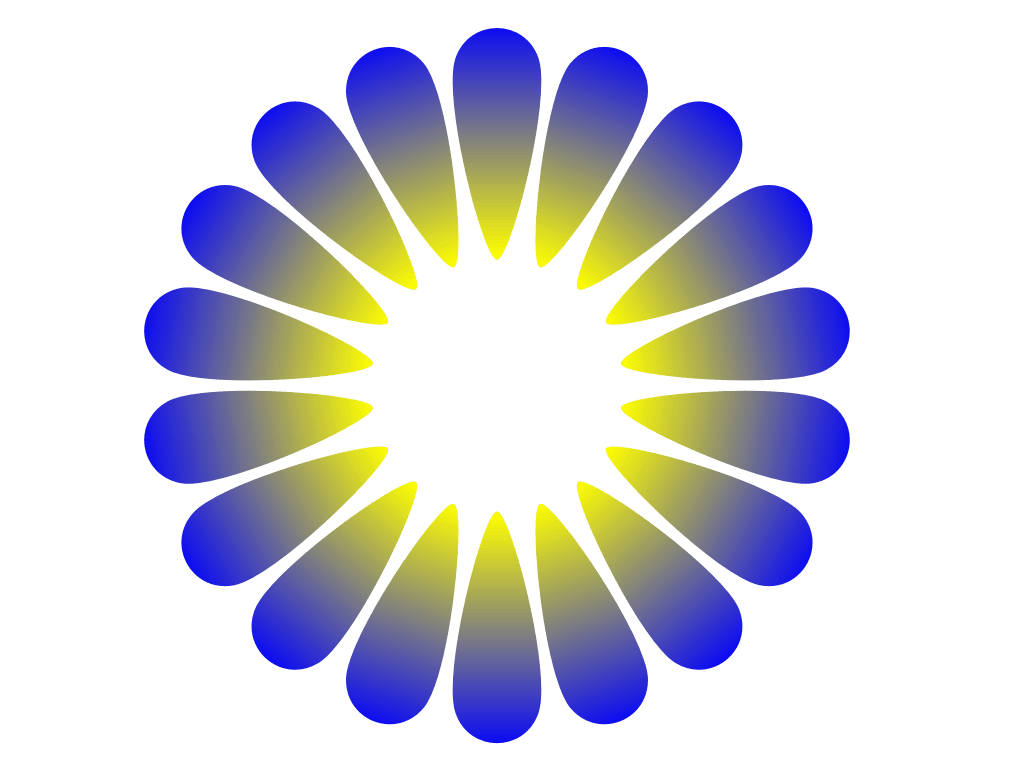
"Clair du lune"*
*Moonlight
The center appears to shine and the whole image appears to expand.
Copyright Aiyoshi Kitaoka 2005 (April 6)
Type VIII
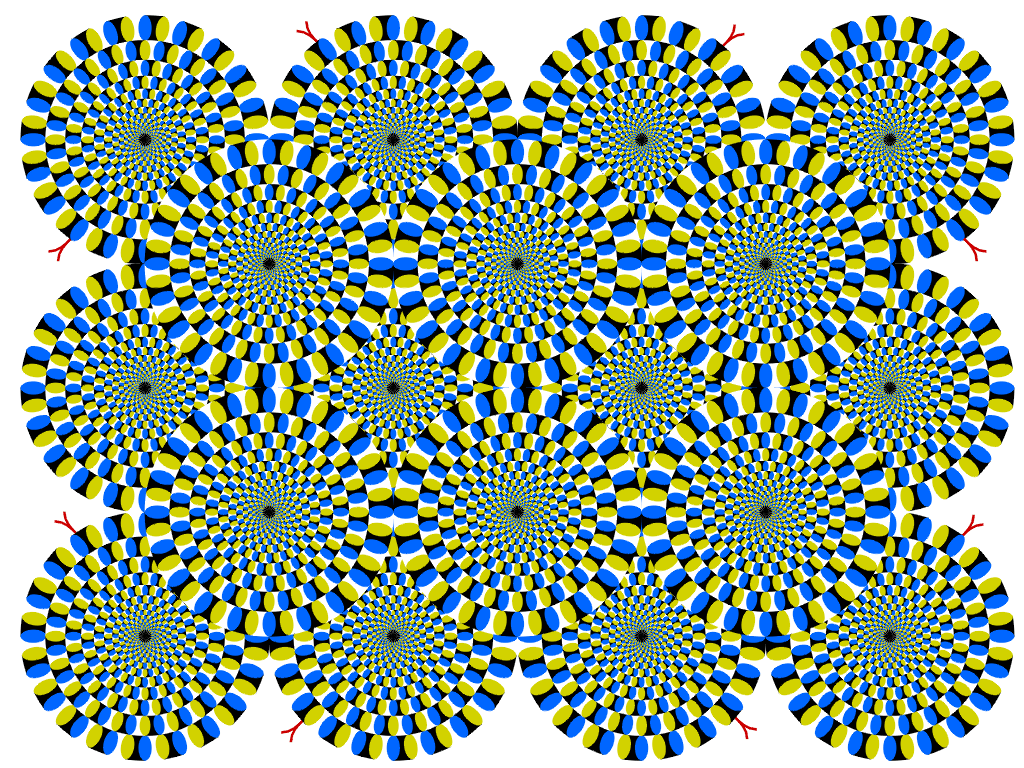
"Rotating snakes"
Circular snakes appear to rotate 'spontaneously'.
Copyright A.Kitaoka 2003 (September 2, 2003)
The commercial use of this image is not free of charge. Modification of this image for commercial purpose is usually declined. Educational or research use or modification is welcome.
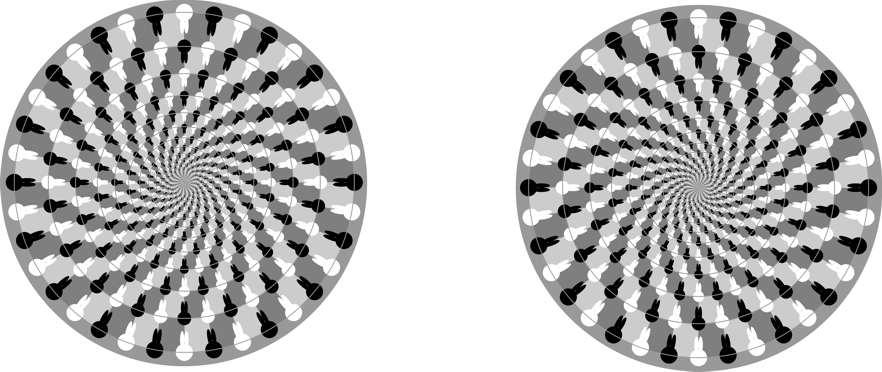
"U-zu"
(A remake)
Rings appear to rotate. This image was originally developed for the spiral illusion, in which the concentric gray lines appear to be a spiral. My nengajo
Copyright A.Kitaoka 2005 (May 23)
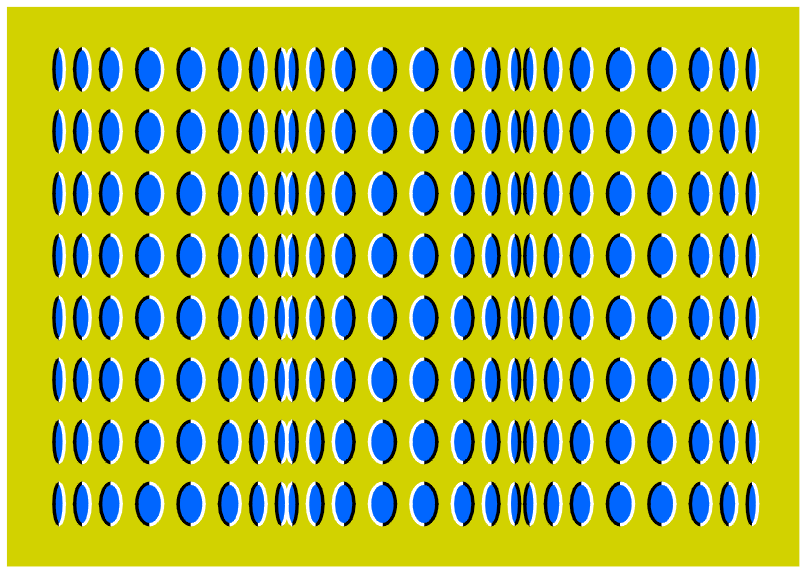
"Rollers"
Rollers appear to rotate.
Copyright A.Kitaoka 2004 (April 20)
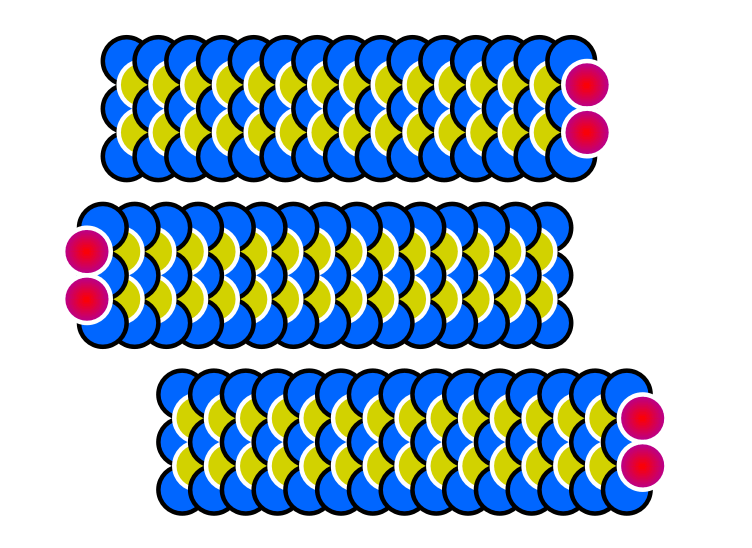
「コンピュータワーム」
虫が動いて見える。
Copyright A.Kitaoka 2005 (April 19)
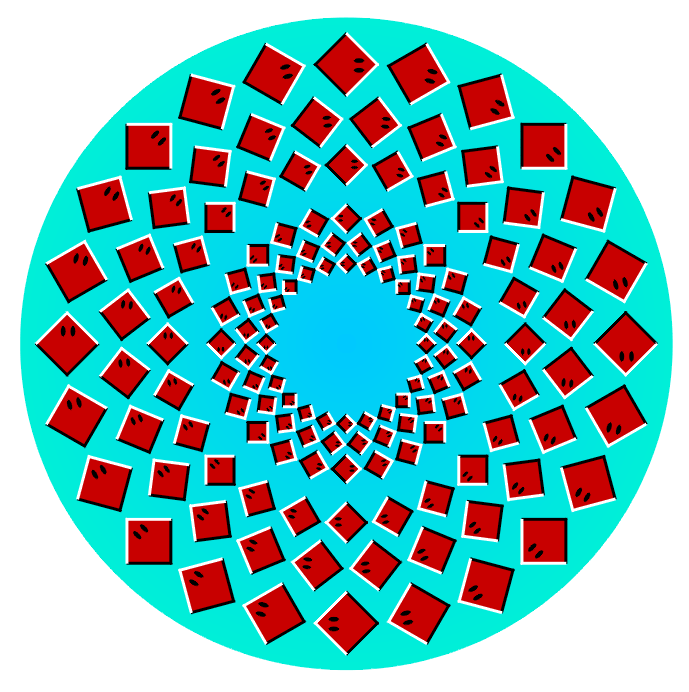
"Rotating rays"
The outer ring of rays appears to rotate clockwise while the inner one counterclockwise.
Copyright A.Kitaoka 2004 (June 12)
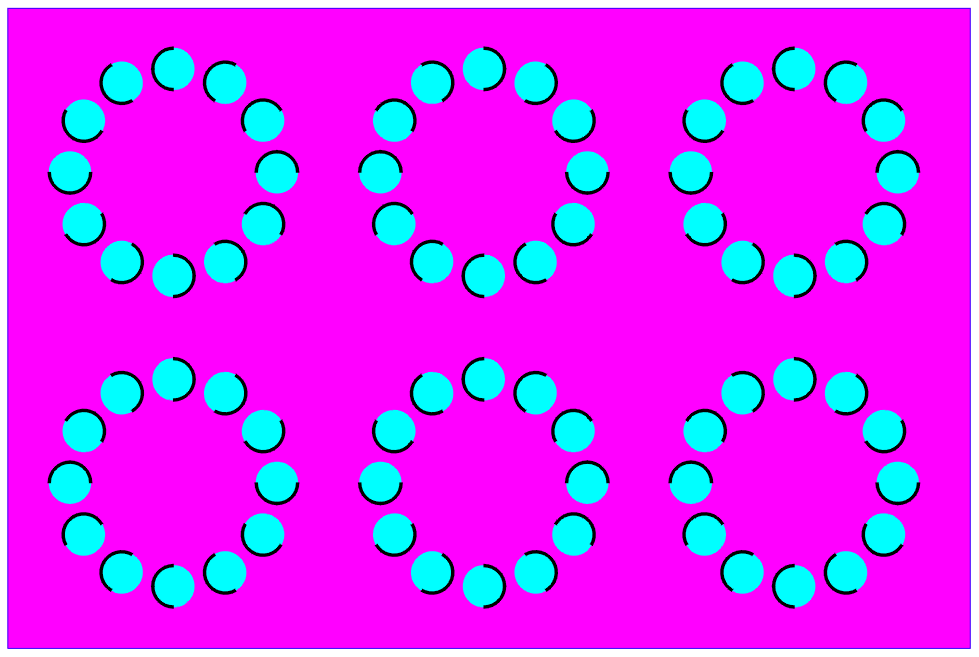
"Crystal balls"
Rings of crystal balls appear to rotate.
Copyright A.Kitaoka 2004 (May 22)
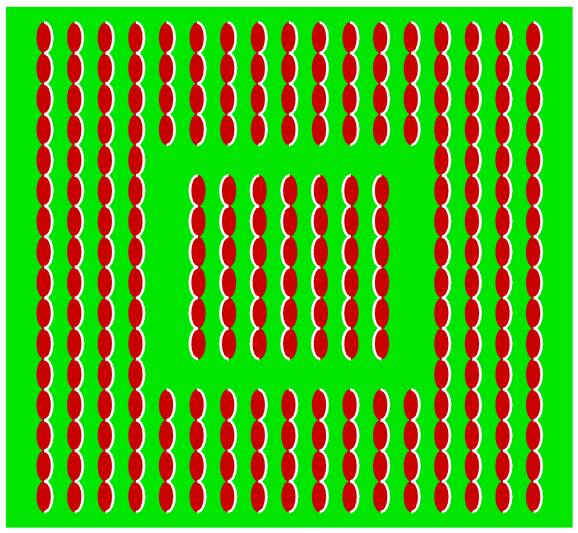
"Sausages"
The inset appears to move leftward.
Copyright A.Kitaoka 2004 (May 19, revised 20)
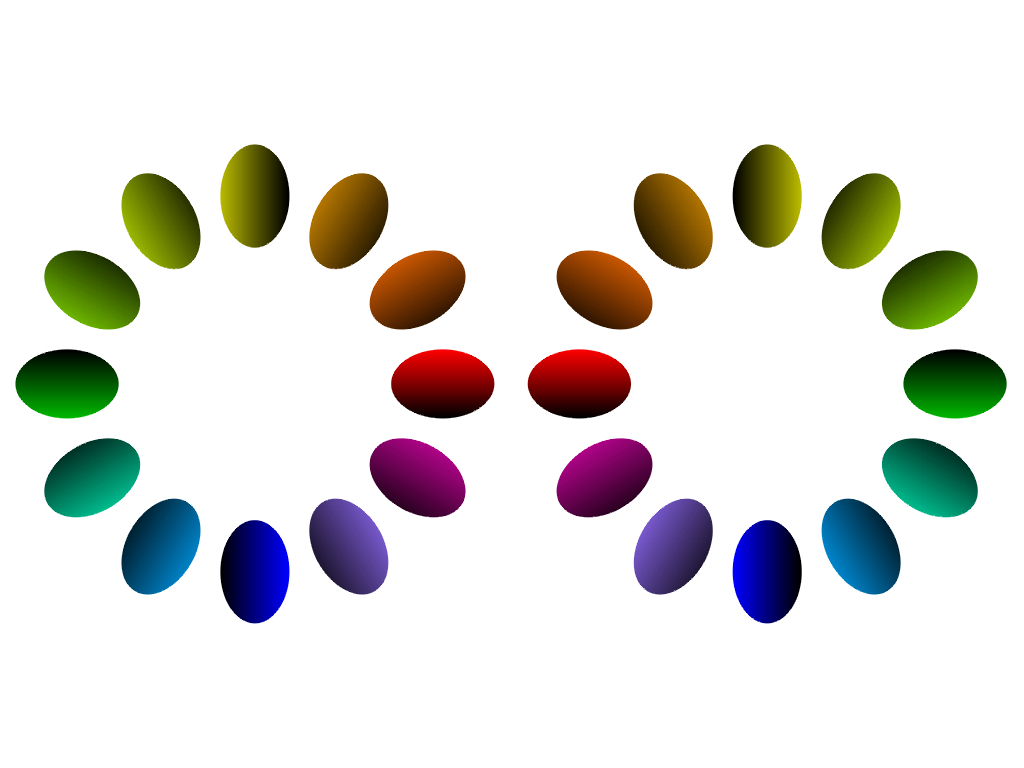
"Rotating color eggs"
1024 x 768 pixels
Rings appear to rotate.
Copyright A.Kitaoka 2005 (March 17)
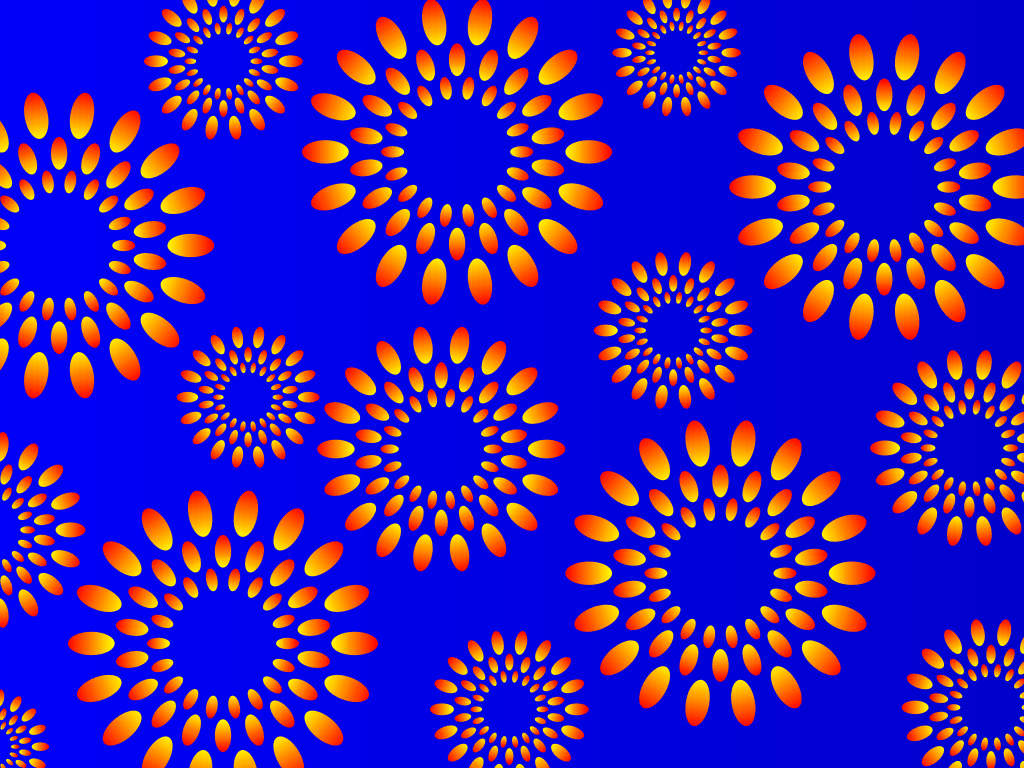
"Hanabi"
Hanabi appear to
open.
Copyright Aiyoshi Kitaoka 2005 (April 26)
Hanabi are fireworks.
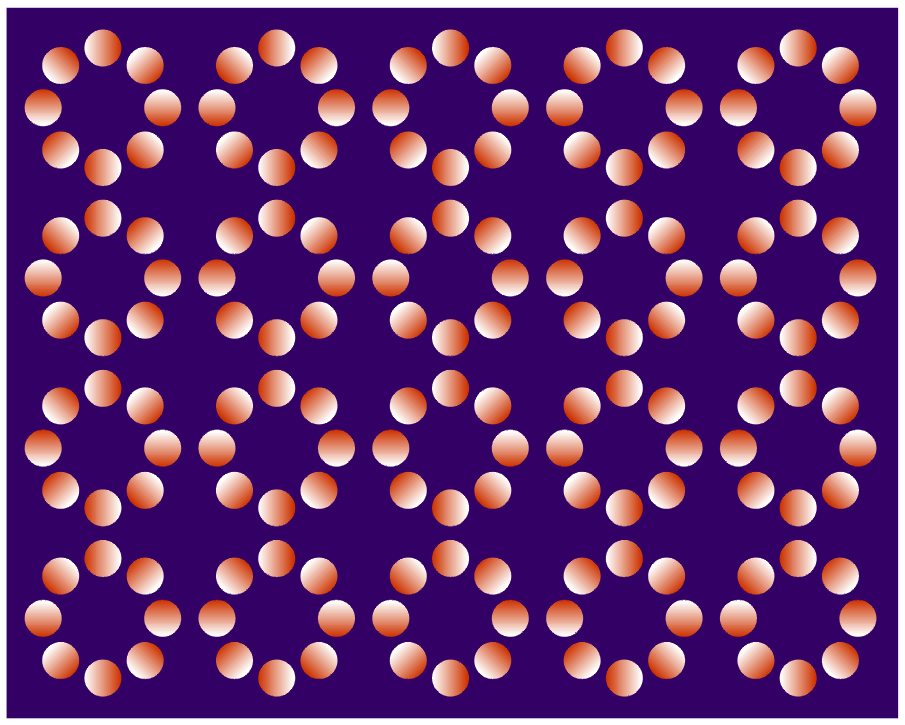
"Maruboro"
Rings appear to rotate.
Copyright Akiyoshi Kitaoka 2005 (April 22)
Maruboro are cookies for babies in Japan; not Marlboro.
I attended VSS2005.
Kitaoka, A. (2005) Is age related to the peripheral drift illusion? An instant study. Informal presentation in VSS2005, Sarasota, Florida, USA, May 10, 2005. PDF
A paper on the physiology of the peripheral drift illusion has been published in the Journal of Neuroscience! <June 10, 2005>
http://www.jneurosci.org/cgi/content/short/25/23/5651
Conway, R. B., Kitaoka, A., Yazdanbakhsh, A., Pack, C. C., and Livingstone, M. S. (2005) Neural basis for a powerful static motion illusion. Journal of Neuroscience, 25, 5651-5656.
A variant of Rotating snakes has decorated the cover!
http://www.jneurosci.org/content/vol25/issue23/cover.shtml
reversed phi
"Caterpillar"
Although the luminances in four regions only increase or decrease, the image appears to move rightward.
Copyright Akiyoshi.Kitaoka 2005 (June 29)
Macromedia Flash Player is necessary. For QuickTime version, click here.
Finally, a comment on KANSEI (sensitivity and sensibility as a human ability)
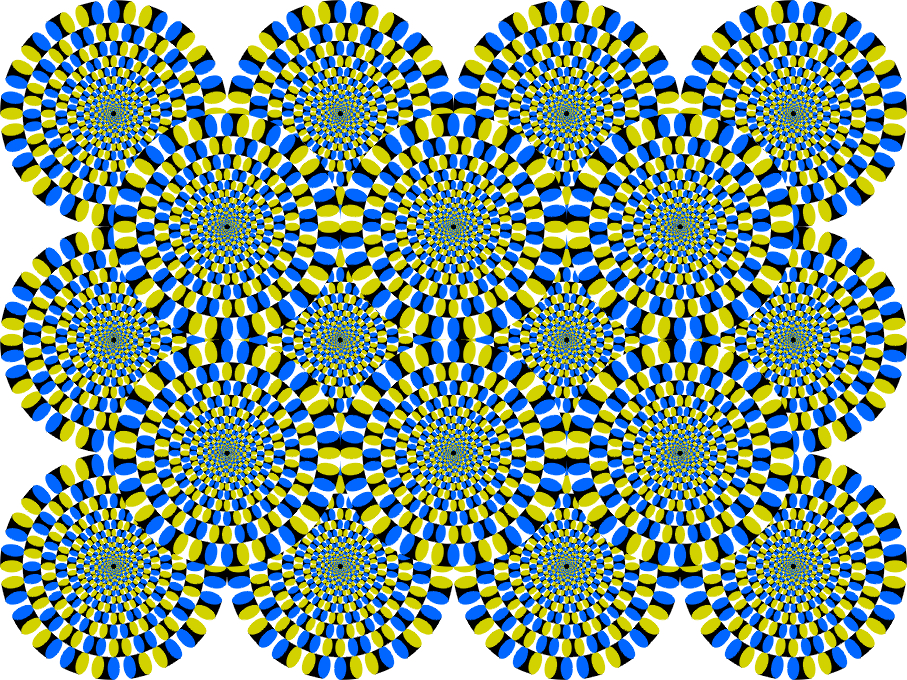
"No motion rotating snakes"
Artists might have given this a title like "Mute voices".
Copyright Akiyoshi.Kitaoka 2005 (June 28)
Thank you.